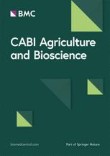Background: Potato landraces (Solanum spp.) are not only crucial for food security and sustenance in Andean com‑
munities but are also deeply rooted in the local culture. The crop originated in the Andes, and while a great diversity
of potato persists, some landraces have been lost. Local communities and the genebank of the International Potato
Center (CIP) partnered to re-establish some of these landraces in situ by supplying clean seed potatoes to farmers.
Over time, the genebank formalized a repatriation program of potato landraces. Repatriation is the process of return‑
ing native germplasm back to its place of origin, allowing a dynamic exchange between ex situ and in situ conditions.
So far, no comprehensive description of CIP’s repatriation program, the changes it induced, nor its benefts, has been
carried out.
Methods: We addressed this research gap by analyzing CIP genebank distribution data for repatriated accessions,
conducting structured interviews with experts of the repatriation program, and applying duration and beneft analy‑
ses to a survey dataset of 301 households.
Results: Between 1997 and 2020, 14,950 samples, representing 1519 accessions, were distributed to 135 communi‑
ties in Peru. While most households (56%) abandoned the repatriated material by the fourth year after receiving it, the
in situ survival probability of the remaining material stabilized between 36% in year 5 and 18% in year 15. Households
where the plot manager was over 60 years old were more likely to grow the repatriated landraces for longer periods
of times. While male plot management decreased survival times compared to female plot management, higher levels
of education, labor force, wealth, food insecurity, and geographic location in the southern part of Peru were associ‑
ated with greater survival times. Most farmers reported nutritional and cultural benefts as reasons for maintaining
landrace material. Repatriated potatoes enabled farmers to conserve potato diversity, and hence, re-establish and
broaden culinary diversity and traditions.
Conclusions: Our study is the frst to apply an economic model to analyze the duration of in situ landrace cultivation
by custodian farmers. We provide an evidence base that describes the vast scope of the program and its benefts.
Dynamic guardianship of potato landraces by Andean communities and the genebank of the International Potato Center
Citation: Lüttringhaus, S., Pradel, W., Suarez, V., Manrique-Carpintero, N. C., Anglin, N. L., Ellis, D., Hareau, G., Jamora, N., Smale, M., & Gómez, R. (2021). Dynamic guardianship of potato landraces by Andean communities and the genebank of the International Potato Center. CABI Agriculture and Bioscience, 2(1). ISSN 2662-4044.
2021-12-03
BIGDATA, GENEBANK, POTATO AGRI-FOOD SYSTEMS, POTATOES
journal_article

